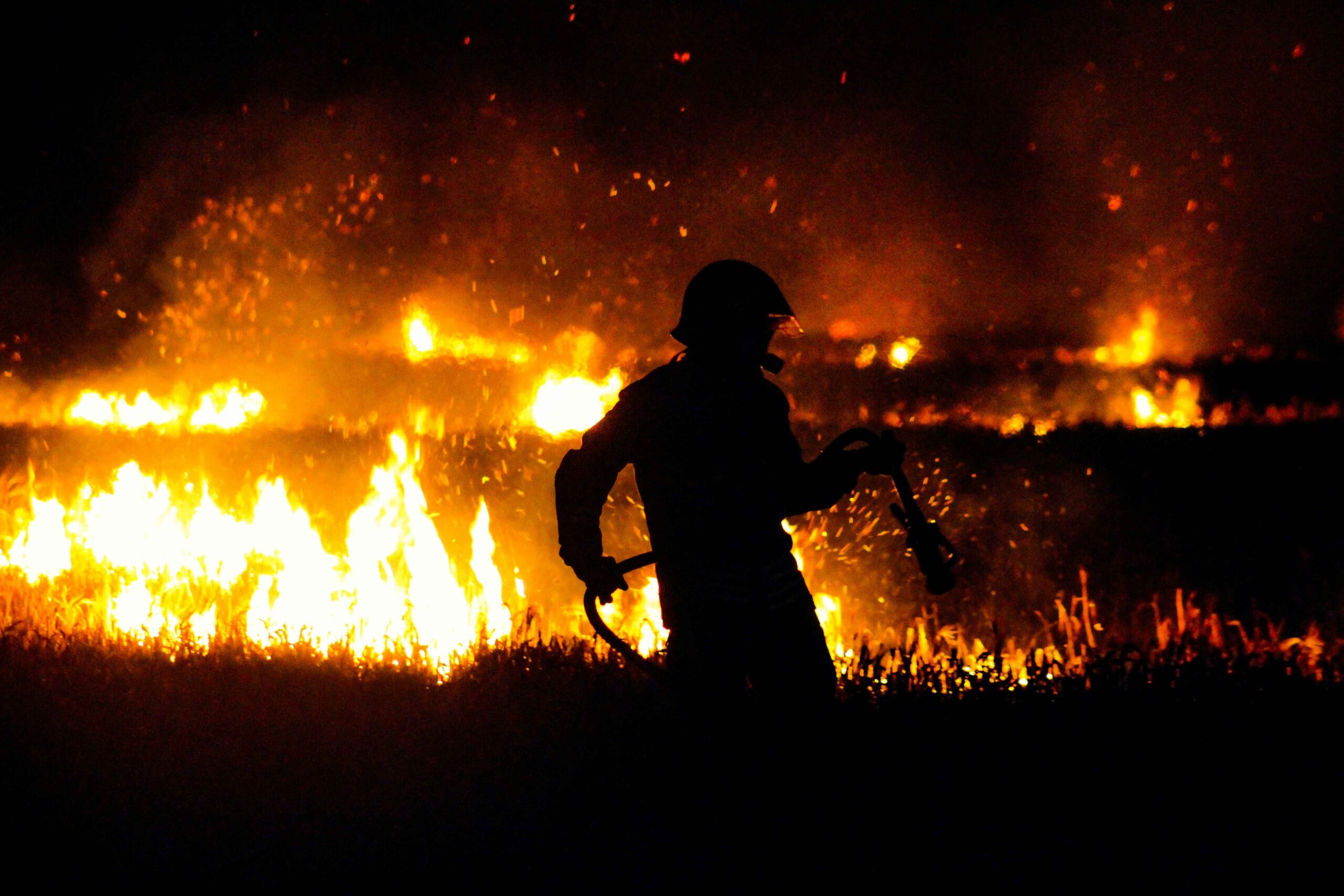
Every day, firefighters put their lives in danger to maintain community safety.
But little did they know, the tools meant to protect them were silently posing another threat.
Firefighting foam seemed a miracle product, swiftly dousing the worst of flames. Only now are we learning its toxic secrets, with serious costs to the brave men and women who answered duty’s call.
The foam that doused the flames may have started its own fire, with manufacturers now in its crosshairs. As studies reveal links to cancer and other illnesses, legal questions surround those who produced this once-trusted tool of the trade.
When the alarms sounded, they raced towards danger while the rest fled to safety. But after the fires were out, a hidden danger lingered, carried home on boots and uniforms. Now, researchers have found troubling connections, spurring a legal fight over accountability.
The Dark Truth of AFFF
Flame-retardant foams like AFFF were developed to effectively extinguish liquid fuel fires, but their secret ingredients posed an unseen health threat.
Per- and polyfluoroalkyl substances (PFAS) were added to AFFF due to their durable carbon-fluorine bonds that resisted heat and flames. Known as “forever chemicals,” PFAS have over 12,000 variations that are extremely difficult for the body and environment to break down.
The two main PFAS used in AFFF, PFOA, and PFOS, were also found in other products at the time.
However, researchers did not fully understand the health implications of PFAS’ unusual molecular structure. PFAS resist natural decay and easily migrate through soils and groundwater. Their persistence allows long-term accumulation in human tissues and blood over multiple exposure pathways.
We now know that PFAS bioaccumulation can increase cancer risks and impact the liver, kidneys, thyroid, cholesterol levels, and reproduction. However, manufacturers withheld safety information for decades, so extensive contamination went largely unaddressed.
The non-biodegradable “forever chemicals” have since been discovered at hundreds of US military sites. This underscores the far-reaching impacts of these flame retardants and the undue risks people face without fully disclosing their health effects. While saving lives in emergencies, AFFF left a concerning toxic legacy that deserves close attention and remediation efforts.
Holding Manufacturers Accountable: AFFF Litigation
Litigation against AFFF foam manufacturers aims to compensate for harm from undisclosed health risks. TorHoerman Law says fire departments, military bases, airports, and other entities use AFFF foams supplied by various companies. It is now known that the PFAS chemicals in AFFF bioaccumulate and pose serious health threats like cancer, liver, and thyroid disease.
Those named as defendants in AFFF lawsuits include major chemical companies that produced and sold the foam, such as 3M, DuPont, Chemours, Tyco, and others. Plaintiffs in these cases typically claim damages for medical costs, lost wages, pain and suffering, disability, and other expenses resulting from PFAS exposure.
According to the latest AFFF lawsuit update, over 7,000 individual AFFF lawsuits have been filed and are pending consolidation in federal court through multidistrict litigation (MDL) procedures. MDLs allow civil cases with common issues or defendants to be coordinated for pretrial proceedings, promoting judicial efficiency and uniform pretrial rulings.
The growing number of AFFF cases reflects widespread contamination from decades of PFAS-containing foam use.
Through litigation, injured parties seek to hold accountable those responsible for manufacturing and distributing a product that introduced dangerous “forever chemicals” without sufficient health risk information or remedial measures.
The Impact of AFFF Lawsuits
In March 2024, the Vancouver Fire Department in British Columbia announced plans to transition firefighter personal protective equipment (PPE) to PFAS-free options. Chief Karen Fry stated this made Vancouver the first department in North America to make the change. Their move was praised locally for prioritizing firefighter health.
A week later, the Concord Fire Department in New Hampshire received city council funding for 92 sets of PFAS-free PPE. This funding helped equip firefighters with modern safety gear free of potentially carcinogenic “forever chemicals.”
The International Association of Fire Fighters has advised on ways to reduce PFAS exposure from contaminated turnout gear.
Suggestions include storing gear away from living areas, transporting it sealed, and regularly cleaning vehicle cabs and hands after contact. Replacement of legacy PPE with newer PFAS-free styles is also recommended as safer alternatives emerge.
Proper cleaning of all used PPE in accordance with NFPA 1851 standards can further limit chemical transfers and exposures.
These early adopter departments demonstrated leadership by transitioning to gear construction methods that avoid concerning PFAS while still effectively protecting firefighters from flames. Their initiatives set an example for prioritizing health moving forward.
FAQs
1. How can I participate in an AFFF lawsuit?
A: To join an AFFF lawsuit, compile evidence regarding your medical and work history associated with exposure to toxic AFFF foam chemicals. Submit the necessary documentation to become part of the lawsuit. Engage in negotiations with the AFFF manufacturer to pursue the highest possible settlement on your behalf. If required, advocate for your case in court to achieve a favorable verdict.
2. When was the use of AFFF foam banned?
A: Public Act 21-191, which went into effect on July 13, 2021, outlawed the use of firefighting foam that purposefully incorporated per- and multi-frequency aerosol (PFAS). It is frequently used to put out Class B flammable liquid and petroleum hydrocarbon fires. This prohibition applies to a number of foam designations, including FP, FPAR (fluorinated foam), FFFP, AR-FFFP, and AFFF.
3. Does AFFF foam have an expiration date?
A: Firefighting foams typically possess a lengthy shelf life if stored according to the manufacturer’s instructions and within specified temperature ranges and if kept in their original, unopened shipping containers. For instance, AFFF-LF and AFFF concentrates can be expected to maintain their effectiveness for 10–20 years if stored appropriately.
As litigation continues and more research emerges on the health impacts of these “forever chemicals,” the legal consequences for manufacturers may depend on whether courts determine they concealed known risks to profit from this ubiquitous product line.
The brave firefighters who put their lives on the line deserve full transparency and accountability regarding the tools they used – and no longer just from foam, but also through the courts.







